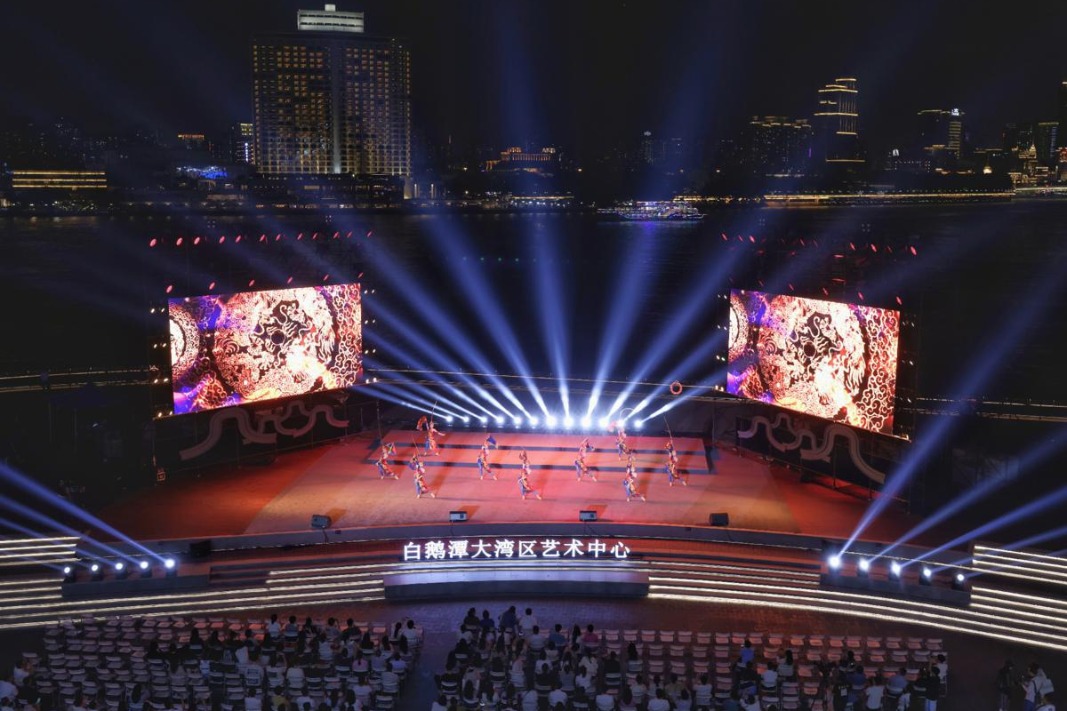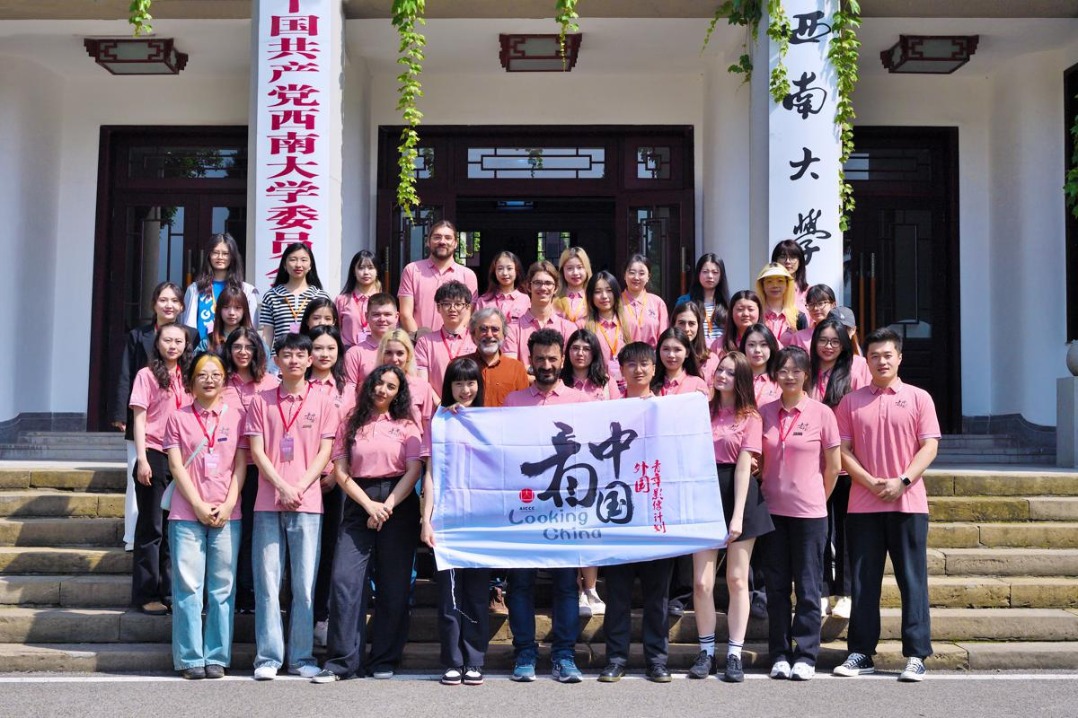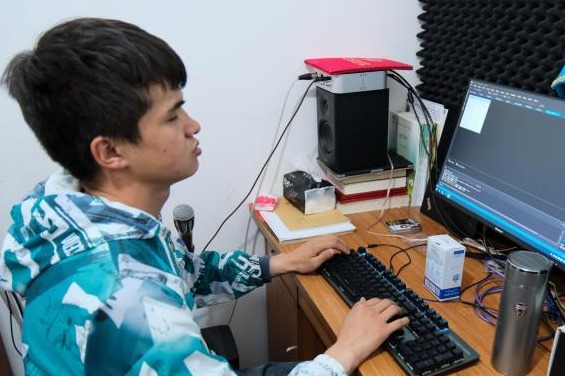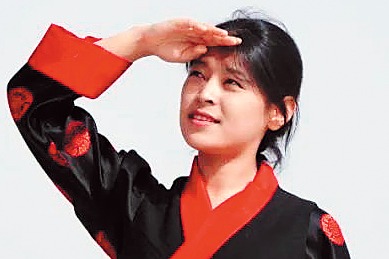Lion dance troupes roaring in Guangxi

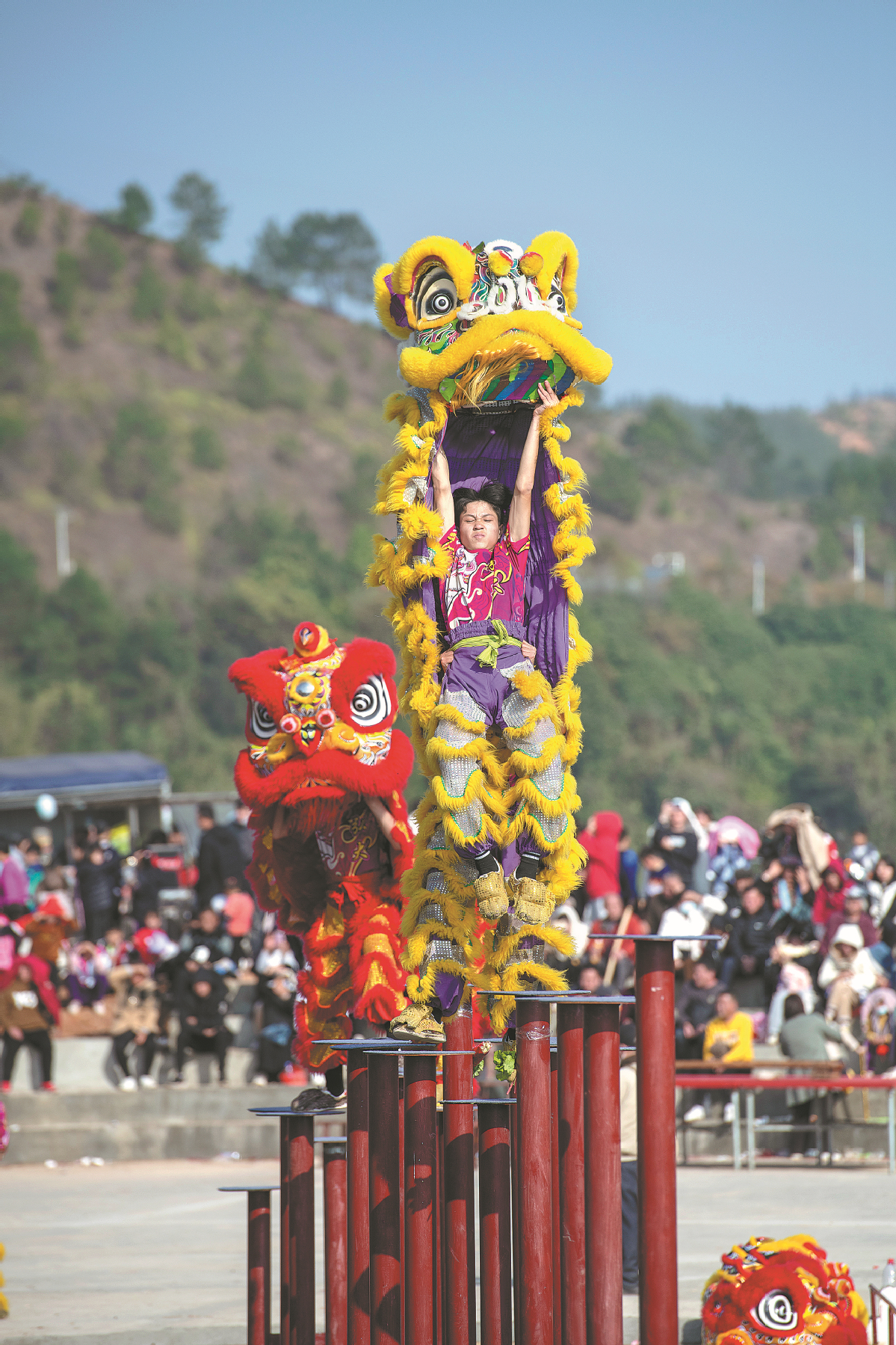
NANNING — At the stadium of Tengxian Technical Secondary School in South China's Guangxi Zhuang autonomous region, papier-mache lion heads swayed to rhythmic drum beats as a group of youths in red-and-yellow uniforms briskly strolled past, concluding their morning practice.
The campus, situated on the outskirts of the region's Wuzhou city, houses a world-class lion-dancing troupe. Consisting of 35 teenagers who are immersed in this traditional Chinese art, which dates back thousands of years, the troupe has garnered numerous accolades in both national and international competitions.
The school's lion dance program is headed by Deng Binguang, a 34-year-old Tengxian county local who started training as a professional lion dancer at a very early age and was crowned "Lion King of the Orient" in Malaysia when he was 14.
Deng later started his own business, setting up lion dance troupes and making and selling a panoply of lion dance costumes. With over 20 employees, the workshop that he set up in 2015 can earn as much as 4 million yuan ($562,453) a year.
Lion dancing has been deeply rooted in the Tengxian culture for centuries. More than 10,000 locals have practiced this craft with over 500 amateur teams and more than a dozen professional teams, according to Zhu Qichun, chairman of the county's lion dancing association.
"Nobody can top us in terms of featuring martial arts in lion dancing," Zhu said. "Lion dancing stands as a hallmark of our county, having been designated as part of our intangible cultural heritage."
Tengxian practices the southern style of lion dancing, which, compared with its counterpart in the north, contains more acrobatic features — especially performing on long poles — and it is considered a visually stunning feat of athleticism.
According to Deng, the act of climbing and performing on the tall poles is not only a display of physical prowess but also carries symbolic meaning, as the height of the pole represents overcoming obstacles and reaching new heights. It also serves as a demonstration of bravery and daring, traits that are admired in traditional Chinese culture.
"You want to make a move more forcefully without any hesitation. Keep working on your arm strength until you can keep it steady," Deng said to one of his students, who slipped slightly while trying to balance the lion head during a pole jump.
Zhu praised the efforts of the local performers.
"We clenched the world champion title in 2004," he said. "Despite the ebb and flow, we have never fallen out of the top three at the national level."
He said he hopes the popularity of lion dancing will help the county draw attention to its other offerings. With the help of Deng's company, he has been promoting some local agricultural products, including kudzu root and cumin.
"As awareness of our brand grows, an increasing number of locals will reap the benefits," Zhu said.
Mo Jinglong, a 19-year-old "lion head" who started training six years ago, said he enjoys the camaraderie he has developed with his fellow dancers.
"Practicing lion dancing teaches us, the dancers, to cooperate and trust our partners during practice and performance," Mo said.
"It pushes us to go beyond our limits and persevere, especially in the face of adversity."
Xinhua
- Auto leaders optimistic as Anhui emerges as industry hub
- Shanghai boosts services for inbound travelers
- China's Longli River Bridge: a marvel of engineering
- Visually impaired programmer revolutionizes braille translation in Xizang
- Innovative 3D printing transforms rural housing in Hubei
- Street stall to success: A stinky tofu journey


















